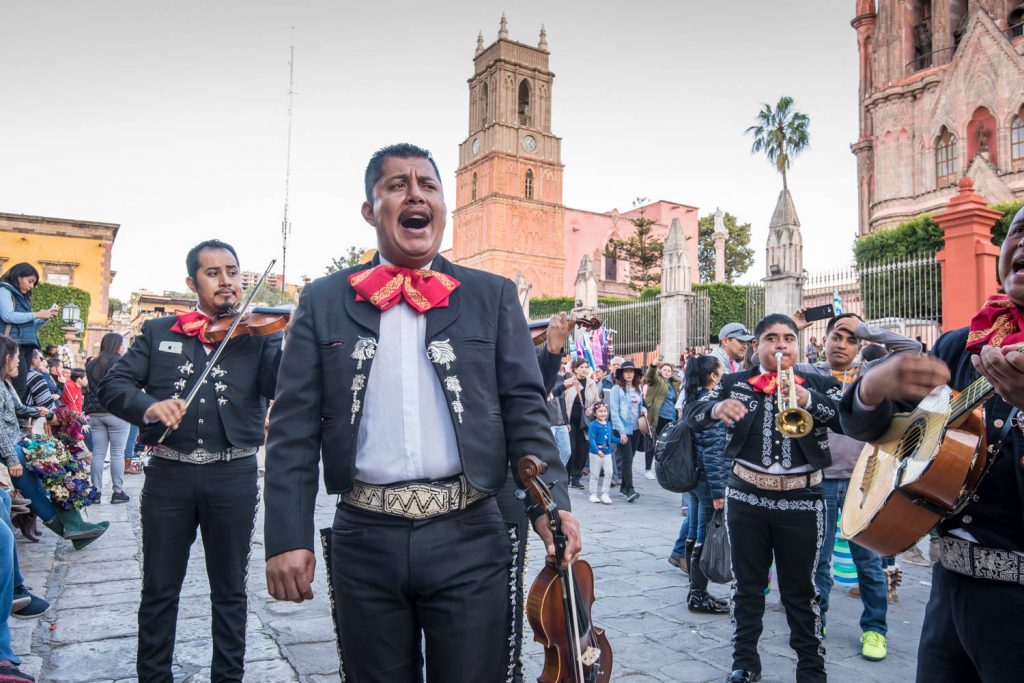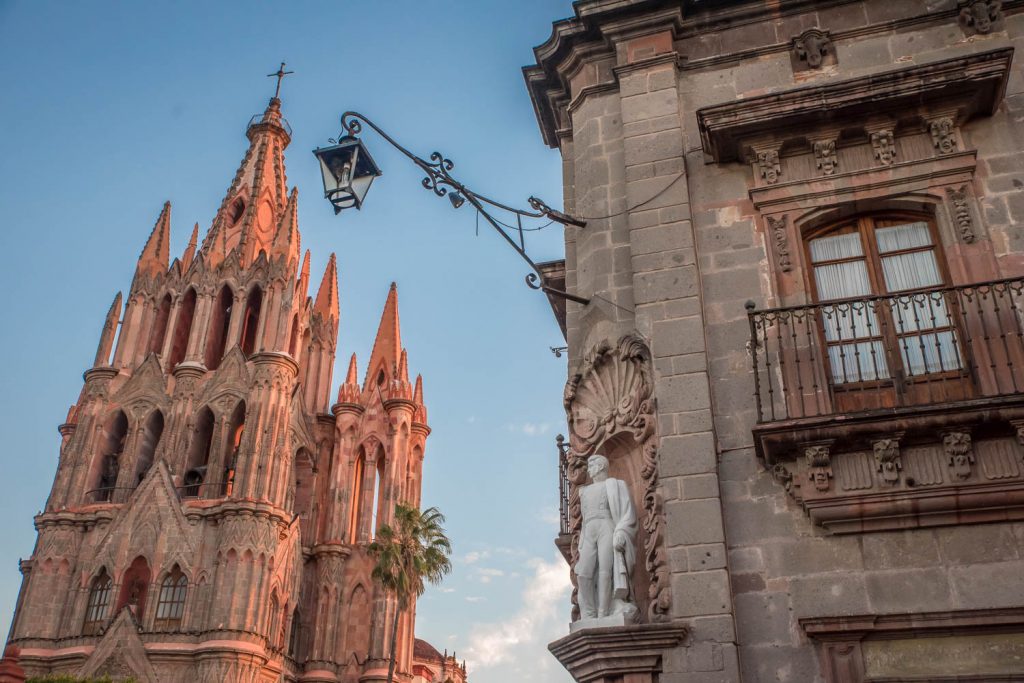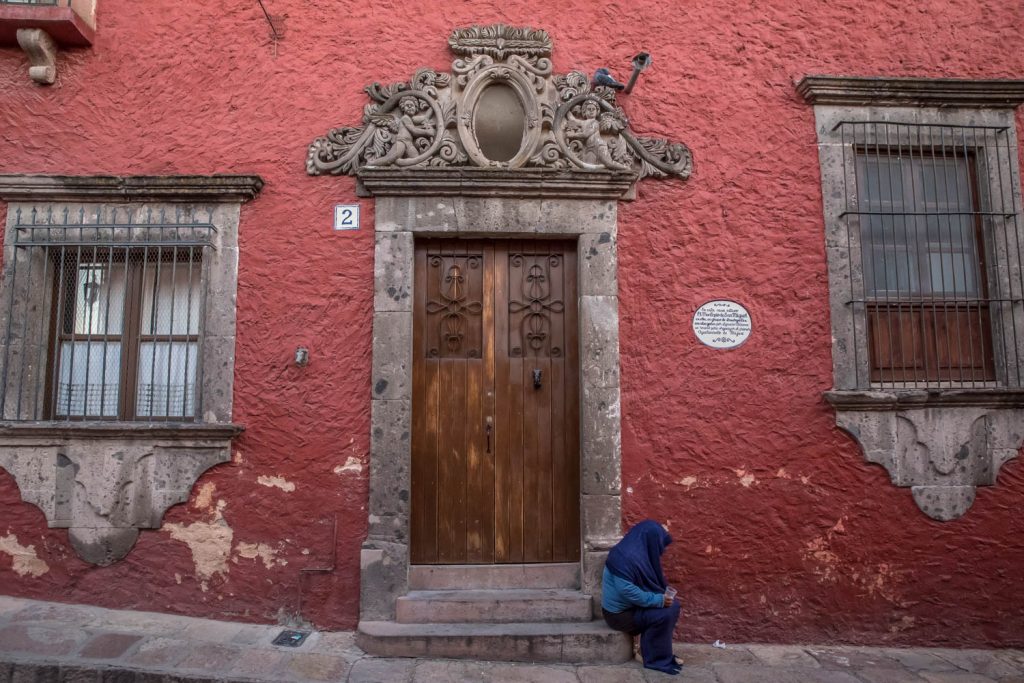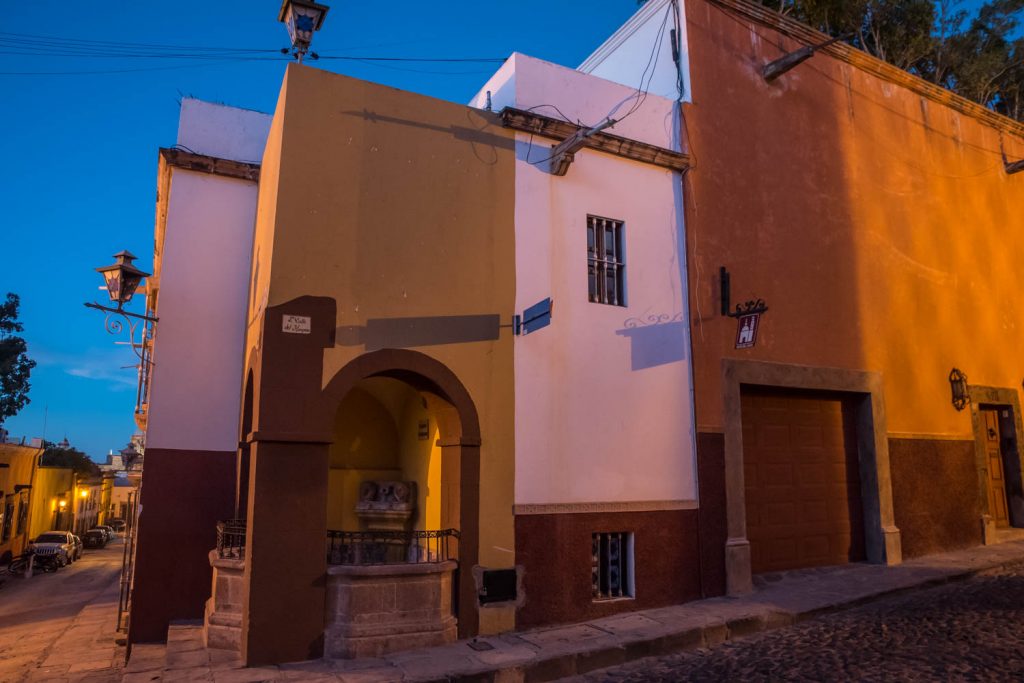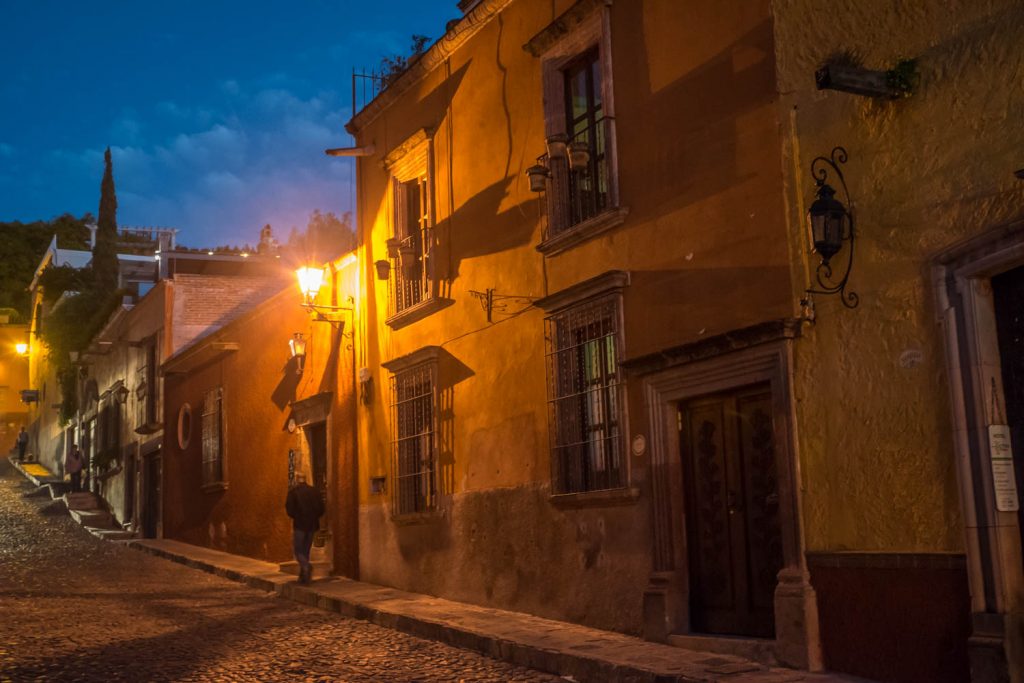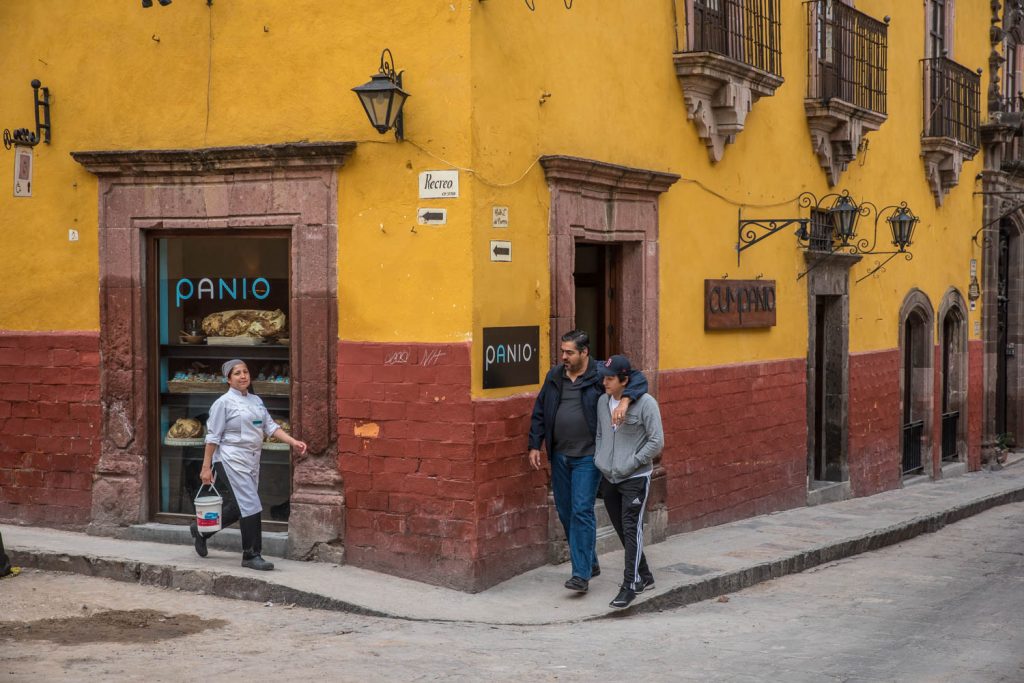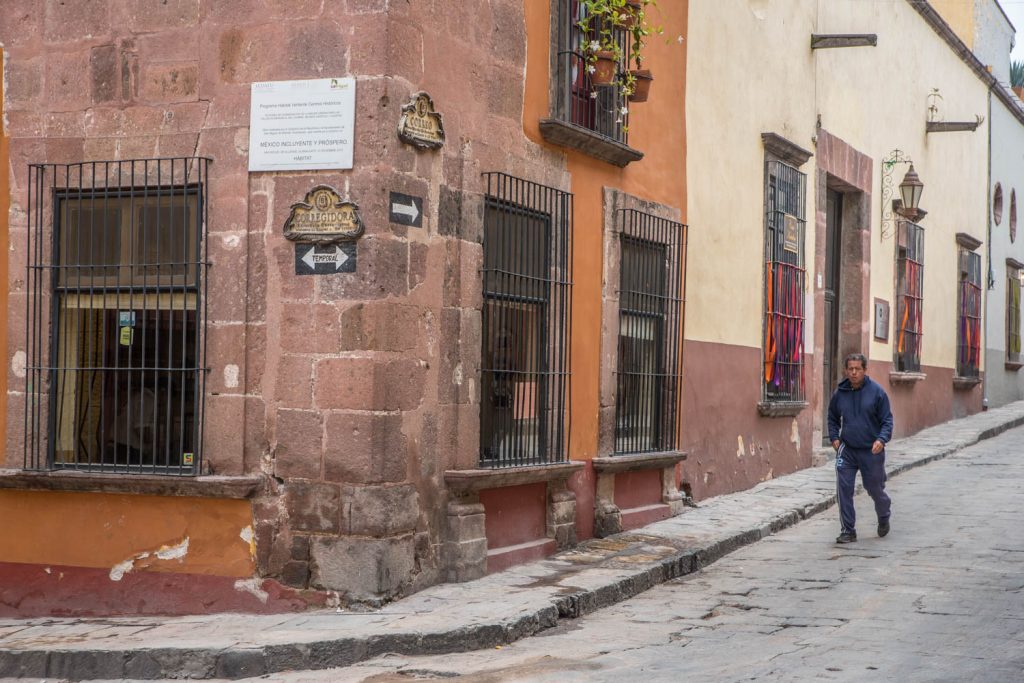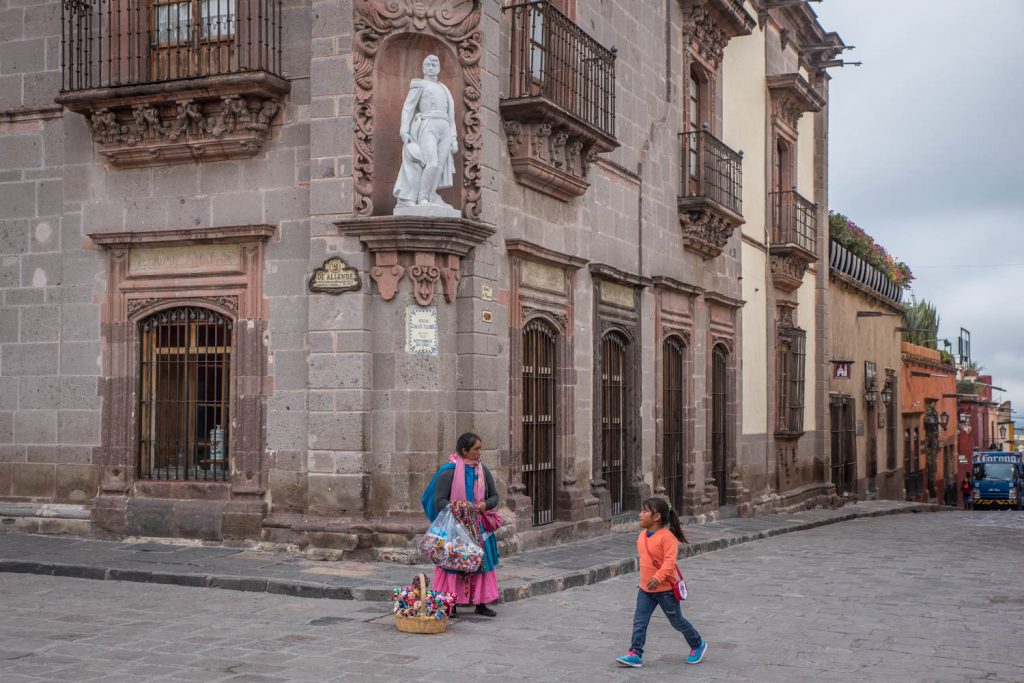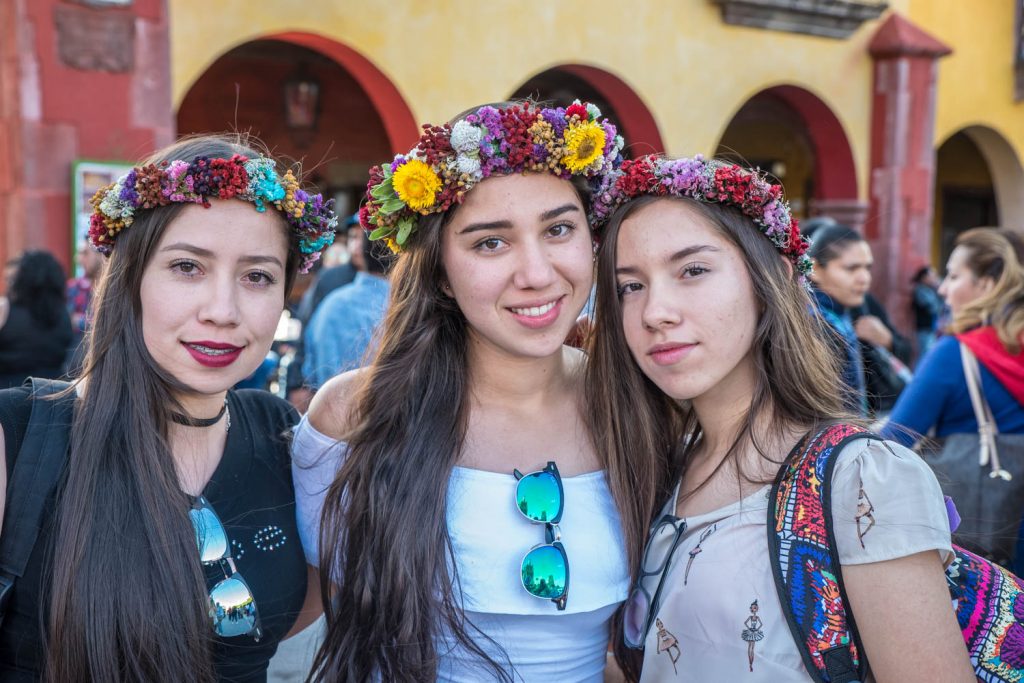
When I left my hotel in Dolores Hidalgo on Sunday, my plan was to catch a taxi to the cemetery to see the grave of ranchera singer/songwriter Jose Alfredo Jimenez that is shaped like a giant sombrero, and take the same taxi to the bus station.
When I stepped out of the hotel however, the street was filled with a large parade and crowds of people. I had completely forgotten that November 20 is the day the anniversary of the Mexican Revolution is celebrated.
The revolution started in 1910 after decades of rule by dictator Porfirio Diaz. He modernized Mexico, built networks of railways and made the trains run on time. But he also had striking workers shot, and he facilitated the seizure of land from indigenous peasants by his rich buddies. He used to powder his face white to hide the indigenous part of his ancestry, and he admired all things French. Every few years he held a rigged election to give the appearance of legitimacy. Finally, after the 1910 election, the people had enough and subsequently Don Porfirio fled to exile in France.
Historians argue about what the revolution actually accomplished other than leading to decades of one-party rule by the PRI (Partido Revolucionario Institucional). My immediate concern though was getting a taxi.
The man at the front desk thought it might be difficult to find a taxi, but that is an understatement. He told me where there is a taxi stand if I could get across the parade route.
Unlike small-town parades in Canada, this one had gymnasts performing, marching bands and other entertainment, but I did not see any floats.
I managed to make it to the taxi stand after asking a policewoman for advice – she pointed me to an area where I could cross the parade discreetly. But there was only one taxi at the stand and no driver. I was told there was no other stand nearby and there were so many people in the downtown anyway that probably no taxi driver in his right mind would go there.
I decided my only option was to walk about 30 minutes carrying my much too heavy baggage to where I believed the bus station was supposed to be. It was where Google Maps put it, and the man at the front desk had confirmed it was.
As I got close to where it should be, I stopped for a refreshing drink and asked the woman if the bus station was indeed there. She told me it moved and the new location was at least 15 blocks away.
I double checked with another man in the area and got the same story. He told me it was very far and suggested that I take the city bus that fortunately ran directly from where I was to within a block of the bus station.
It was good advice and the trip was only five pesos or 35 cents.
I got a bus without difficulty to San Miguel de Allende, but then faced the same problem. The bus station is far from the centre and the few taxis that came by were always grabbed first by Mexicans, even though I had waited longer.
Finally, a taxi driver stopped, but when I told him my destination, he said it was impossible because there is too much traffic in the city centre. I pleaded and told him he could just get me as close as it was possible and I would walk the rest of the way. He reluctantly agreed.
When we got into the old city, I could see he was absolutely right. The little narrow cobbled streets were jam packed with parked vehicles, strolling pedestrians and vehicles stopped on the road unable to move in all the traffic. My driver cut through several smaller streets, constantly trying to find a way through, sometimes backing up and turning around.
At one time, we were heading straight into traffic on a narrow street, dodging to the side to let oncoming vehicles pass. I asked the driver, knowing the answer, if the road we were on was a two-way street.
“No,” he responded, smiling. “Es mi modo.” (It’s my way).
As we reached the end of it, there was a policeman directing traffic, and he just waved us through. The driver gave a small victory cheer, relieved that he wasn’t ticketed.
Finally, he turned down another narrow, cobbled street and pulled up at the front door of my hotel. No need to walk. It’s not customary in Mexico to tip taxi drivers, but I made an exception in his case.
After checking in and catching my breath, I decided to walk to the city centre, down the hill to check out the festivities. The central square was packed with people. There were mariachis playing music, women were wearing crowns of dried flowers, and in every direction people were taking “selfies” on their phones.
San Miguel de Allende is a colonial city that has been protected as a heritage site for many years. It’s not an over-the-top restoration as I’ve seen in some places, but without this protection I doubt it would have retained its charm.
The tall parish church that dominates the central square is pinkish stone and is compared to a wedding cake. The story is that the design was based on a postcard of the church in Belgium, and the designer, a stonemason, drew the design into the sand.
Some of the buildings to the edge of the square had stone arched colonnades over the sidewalk, as is typical in Spanish colonial design.
I had limited time in San Miguel as I had to reduce my stay from two nights to one. That’s because my next destination is the Monarch butterfly sanctuary in Michoacán, and the only way to get there practically was to leave from the neighboring city of Celaya in the very early morning.
So, I spent the Sunday afternoon and Monday morning exploring the streets of San Miguel and then caught a bus to Celaya where I set my alarm for 5 a.m.
The next day, Tuesday, today, was the longest I will be travelling by bus and was also the trickiest in terms of timing of connections. Fortunately, it went smoothly, though I almost missed the long-distance bus from Celaya to Zitacuaro, when the driver decided to leave 15 minutes early.
Fortunately, I spotted him getting onto the bus and went over to confirm it was the right bus. He didn’t have me on his list, but I had a ticket that I’d bought in advance. The first-class bus was virtually empty and even had functioning Wi-Fi on board.
Lastly, I caught a very non-first class bus to the town of Angangueo from where I plan to visit the butterfly sanctuary tomorrow.

